Resurrection (novel)
 First US edition | |
| Author | Leo Tolstoy |
|---|---|
| Original title | Воскресеніе |
| Country | Russia |
| Language | Russian |
| Genre | Philosophical novel, political fiction |
| Publisher | First published serially in Niva then Dodd, Mead (US) |
Publication date | 1899 |
Published in English | 1900 |
| Media type | Print (Hardcover, Paperback) and English-language Audio Book |
| Pages | 483 (Oxford World's Classics edition) |
Resurrection (pre-reform Russian: Воскресеніе; post-reform Russian: Воскресение, tr. Voskreséniye), first published in 1899, was the last novel written by Leo Tolstoy. The book is the last of his major long fiction works published in his lifetime. Tolstoy intended the novel as an exposition of the injustice of man-made laws and the hypocrisy of the institutionalized church. The novel also explores the economic philosophy of Georgism, of which Tolstoy had become a very strong advocate towards the end of his life, and explains the theory in detail. It was first published serially in the popular weekly magazine Niva in an effort to raise funds for the resettlement of the Doukhobors.
Plot outline[edit]
The story is about a nobleman named Dmitri Ivanovich Nekhlyudov, who seeks redemption for a sin committed years earlier. When he was a younger man, at his Aunts' estate, he fell in love with their ward, Katyusha (Katerina Mikhailovna Maslova), who is goddaughter to one Aunt and treated badly by the other. However, after going to the city and becoming corrupted by drink and gambling, he returns two years later to his Aunts' estate and rapes Katyusha, leaving her pregnant. She is then thrown out by his Aunt, and proceeds to face a series of unfortunate and unpleasant events, before she ends up working as a prostitute, going by her surname, Maslova.
Ten years later, Nekhlyudov sits on a jury which sentences the girl, Maslova, to prison in Siberia for murder (poisoning a client who beat her, a crime of which she is innocent). The book narrates his attempts to help her practically, but focuses on his personal mental and moral struggle. He goes to visit her in prison, meets other prisoners, hears their stories, and slowly comes to realize that below his gilded aristocratic world, yet invisible to it, is a much larger world of cruelty, injustice and suffering. Story after story he hears and even sees people chained without cause, beaten without cause, immured in dungeons for life without cause, and a twelve-year-old boy sleeping in a lake of human dung from an overflowing latrine because there is no other place on the prison floor, but clinging in a vain search for love to the leg of the man next to him, until the book achieves the bizarre intensity of a horrific fever dream. He decides to give up his property and pass ownership on to his peasants, leaving them to argue over the different ways in which they can organise the estate, and he follows Katyusha into exile, planning on marrying her. On their long journey into Siberia, she falls in love with another man, and Nekhludov gives his blessing and still chooses to live as part of the penal community, seeking redemption.
Popular and critical reception[edit]
The book was eagerly awaited. "How all of us rejoiced," one critic wrote on learning that Tolstoy had decided to make his first fiction in 25 years, not a short novella but a full-length novel. "May God grant that there will be more and more!" It outsold Anna Karenina and War and Peace. Despite its early success, today Resurrection is not as famous as the works that preceded it.[1]
Some writers have said that Resurrection has characters that are one-dimensional and that as a whole the book lacks Tolstoy's earlier attention to detail. By this point, Tolstoy was writing in a style that favored meaning over aesthetic quality.[1]
The book faced much censorship upon publication. The complete and accurate text was not published until 1936. Many publishers printed their own editions because they assumed that Tolstoy had given up all copyrights as he had done with previous books. Instead, Tolstoy retained the copyright and donated all royalties to the Doukhobors, who were Russian pacifists hoping to emigrate to Canada.[1]
It is said of legendary Japanese filmmaker Kenji Mizoguchi that he was of the opinion that "All melodrama is based on Tolstoy's Resurrection".[2]
Adaptations[edit]
Operatic adaptations of the novel include the Risurrezione by Italian composer Franco Alfano, Vzkriesenie by Slovak composer Ján Cikker, and Resurrection by American composer Tod Machover.
Additionally, various film adaptations, including a Russian film Katyusha Maslova of director Pyotr Chardynin (1915, the first film role of Natalya Lisenko); a 1944 Italian film Resurrection; a 1949 Chinese film version entitled "蕩婦心" (A Forgotten Woman) starring Bai Guang; a Russian film version directed by Mikhail Shveitser in 1960, with Yevgeny Matveyev, Tamara Semina and Pavel Massalsky, have been made. The best-known film version, however, is Samuel Goldwyn's English-language We Live Again, filmed in 1934 with Fredric March and Anna Sten, and directed by Rouben Mamoulian. The Italian directors Paolo and Vittorio Taviani released their TV film Resurrezione in 2001. The Spanish director Alberto Gonzalez Vergel also released his TV film "Resureccion" in 1966. Kenji Mizoguchi,s film "Straights of love and hate" (1937) was also inspired by "Resurrection".
A 1968 BBC mini-series Resurrection, rebroadcast in the US on Masterpiece Theatre.[3] The Indian movie Barkha Bahar (1973) was based on this novel.
Notes[edit]
- ^ a b c Ernest J. Simmons, Introduction to Tolstoy's Writings http://www.ourcivilisation.com/smartboard/shop/smmnsej/tolstoy/chap12.htm
- ^ Shindo, Kaneto (1975). Kenji Mizoguchi: The Life of a Film Director.
- ^ Resurrection on IMDb.
External links[edit]
| Wikisource has original text related to this article: |
- Resurrection at Project Gutenberg translated by Louise Maude








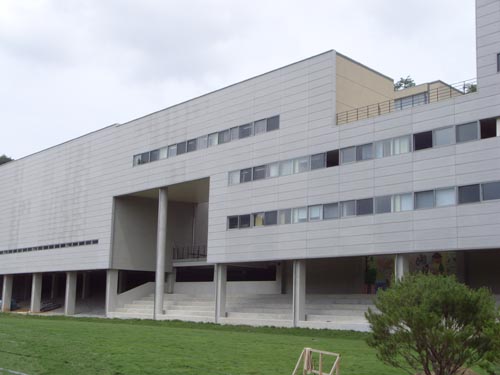


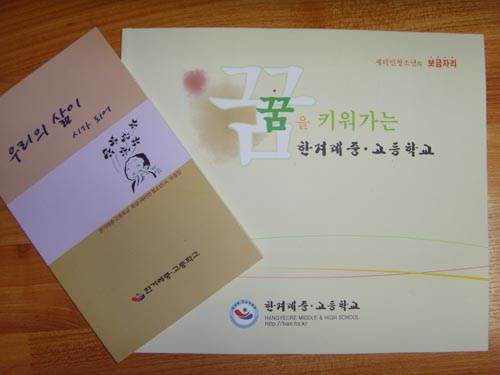


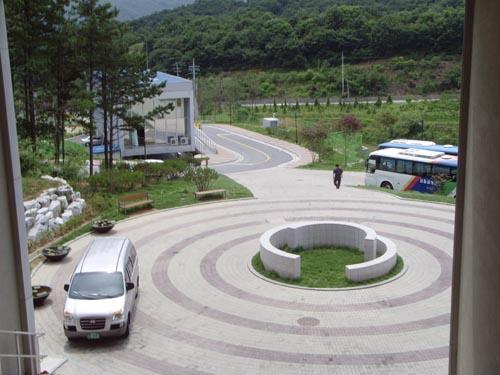
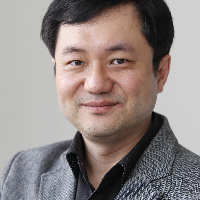

 최근 자서전을 낸 원불교 박청수 교무는 “천주교는 사랑, 원불교는 보은, 불교는 자비로 이 세상에서 뒤처지고 못난 사람을 돕는 것”이라며 “종교마다 하는 일이 달라 보여도 사실은 같은 일”이라고 말했다. ⓒ이정실 여성신문 사진기자
최근 자서전을 낸 원불교 박청수 교무는 “천주교는 사랑, 원불교는 보은, 불교는 자비로 이 세상에서 뒤처지고 못난 사람을 돕는 것”이라며 “종교마다 하는 일이 달라 보여도 사실은 같은 일”이라고 말했다. ⓒ이정실 여성신문 사진기자





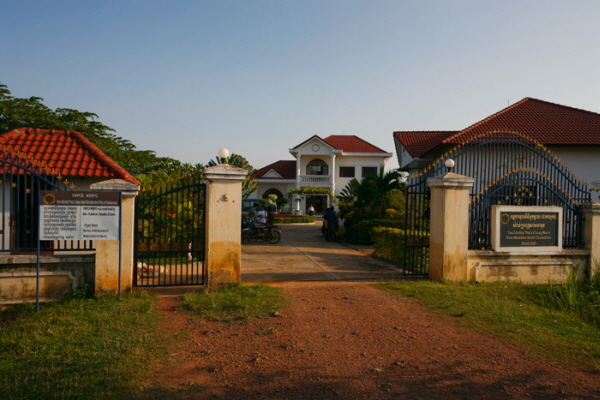
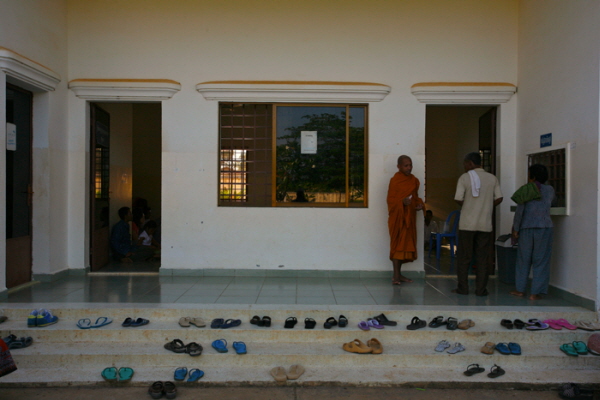
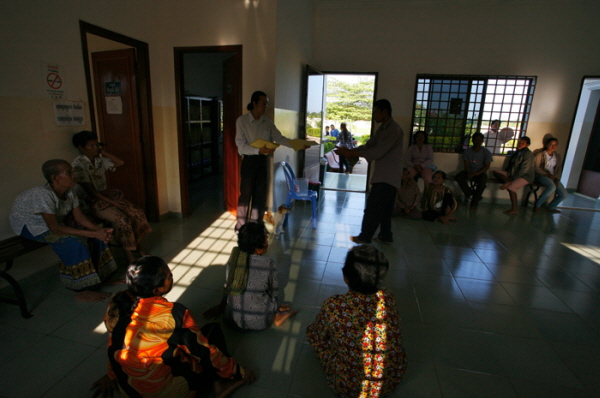 병원은 참으로 평화로웠습니다. 큰길에서 조금 들어간 조용한 동네로 정문 앞으로는 논밭도 제법 펼쳐져 있는 조용한 곳이었습니다. 오전 8시가 되기도 전에 이미 제법 많은 환자들이 몰려들어 병원건물 앞에 자리잡고 차례를 기다리고 있는 모습은 낮설지 않았습니다.
병원은 참으로 평화로웠습니다. 큰길에서 조금 들어간 조용한 동네로 정문 앞으로는 논밭도 제법 펼쳐져 있는 조용한 곳이었습니다. 오전 8시가 되기도 전에 이미 제법 많은 환자들이 몰려들어 병원건물 앞에 자리잡고 차례를 기다리고 있는 모습은 낮설지 않았습니다.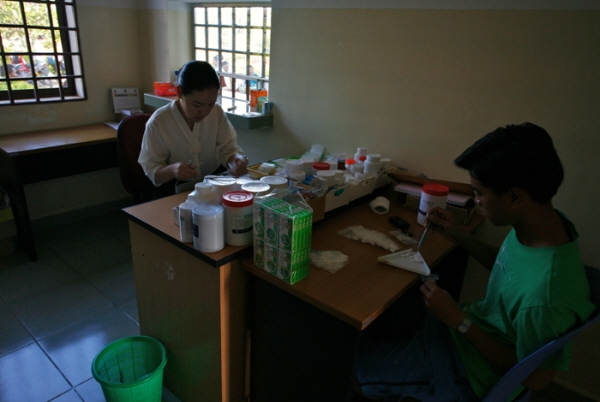 병원건물 안을 찬찬히 살펴보았습니다. 병원이라고 하기엔 턱없는 시설입니다. 진료소라고 부르는 편이 맞을 듯 합니다. 과거 7,80년대 도시변두리 달동네와 공단 등지에서 활발했던 주말진료소는 병원갈 형편이 안되었던 가난한 주민들과 노동자들에게 그나마 큰 의지가 되었을 것입니다. 진료장비래야 청진기가 고작이고 요즘 우리나라의 어느 개인병원에나 다 있는 초음파조차도 갖추지 못한 장비수준은 캄보디아의 의료현실을 그대로 보여주는 듯 합니다.
병원건물 안을 찬찬히 살펴보았습니다. 병원이라고 하기엔 턱없는 시설입니다. 진료소라고 부르는 편이 맞을 듯 합니다. 과거 7,80년대 도시변두리 달동네와 공단 등지에서 활발했던 주말진료소는 병원갈 형편이 안되었던 가난한 주민들과 노동자들에게 그나마 큰 의지가 되었을 것입니다. 진료장비래야 청진기가 고작이고 요즘 우리나라의 어느 개인병원에나 다 있는 초음파조차도 갖추지 못한 장비수준은 캄보디아의 의료현실을 그대로 보여주는 듯 합니다. 이틀 후, 프놈펜에서 방문했던 한국의사들이 세운 기독교선교 무료병원인 헤브론병원과 여러가지로 비교가 됩니다. 병원건물이야 두 곳 모두 훌륭하지만 헤브론병원은 초음파와 혈액검사기 등 기본적인 진단장비와 검사장비가 갖추어져 있었습니다. 그리고 무엇보다도 한국에서 20년 이상 개업의사로서 풍부한 임상경험을 가진 훌륭한 의사들이 진료에 임하고 있었습니다.
이틀 후, 프놈펜에서 방문했던 한국의사들이 세운 기독교선교 무료병원인 헤브론병원과 여러가지로 비교가 됩니다. 병원건물이야 두 곳 모두 훌륭하지만 헤브론병원은 초음파와 혈액검사기 등 기본적인 진단장비와 검사장비가 갖추어져 있었습니다. 그리고 무엇보다도 한국에서 20년 이상 개업의사로서 풍부한 임상경험을 가진 훌륭한 의사들이 진료에 임하고 있었습니다.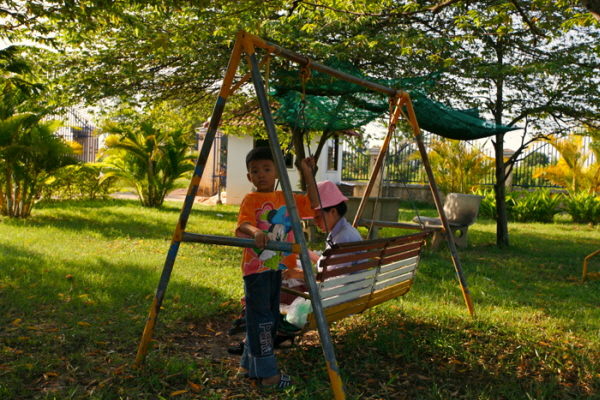 아빠가 진료를 받는 동안 아이는 병원 앞마당의 그네에 앉아 뜨개질을 하는 엄마 곁에서 아빠를 기다립니다. 병원은 쉬기에 참 좋은 공간입니다. 게다가 한 쪽으로는 아주 널찍한 공터가 있어서 교무님들은 여기에 배구코트와 농구대를 설치해놓았습니다. 아마 주민잔치나 체육대회라도 여는 모양입니다. 진료활동 외에도 한글학교와 컴퓨터교육, 그리고 아주 가난한 지역주민들을 위한 생활지원사업도 꾸준하게 진행하고 있습니다.
아빠가 진료를 받는 동안 아이는 병원 앞마당의 그네에 앉아 뜨개질을 하는 엄마 곁에서 아빠를 기다립니다. 병원은 쉬기에 참 좋은 공간입니다. 게다가 한 쪽으로는 아주 널찍한 공터가 있어서 교무님들은 여기에 배구코트와 농구대를 설치해놓았습니다. 아마 주민잔치나 체육대회라도 여는 모양입니다. 진료활동 외에도 한글학교와 컴퓨터교육, 그리고 아주 가난한 지역주민들을 위한 생활지원사업도 꾸준하게 진행하고 있습니다.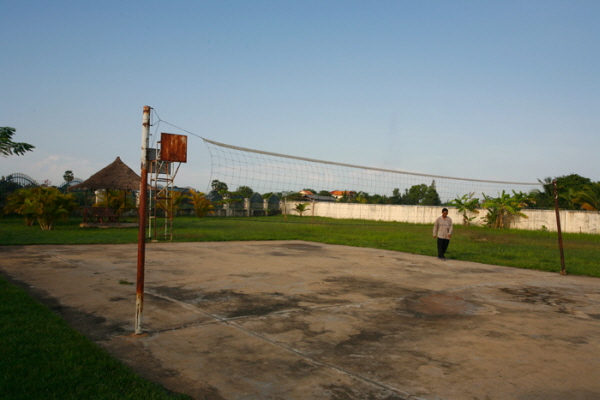 무료구제병원의 운영에 대해서만큼은 교무님들도 여러가지 어려움과 문제인식을 갖고 계셨습니다. 투약에 의존하는 좁은 진료범위, 예산의 문제로 인한 현지의사 고용문제 (젊은 의사를 구하려면 급여를 두 배 이상 주어야 한다고 합니다), 짧은 진료시간(대개 오전에 진료가 끝납니다), 갈수록 조금씩 감소하는 환자 수 (요즘은 하루 평균 50~70명) 등등..
무료구제병원의 운영에 대해서만큼은 교무님들도 여러가지 어려움과 문제인식을 갖고 계셨습니다. 투약에 의존하는 좁은 진료범위, 예산의 문제로 인한 현지의사 고용문제 (젊은 의사를 구하려면 급여를 두 배 이상 주어야 한다고 합니다), 짧은 진료시간(대개 오전에 진료가 끝납니다), 갈수록 조금씩 감소하는 환자 수 (요즘은 하루 평균 50~70명) 등등..